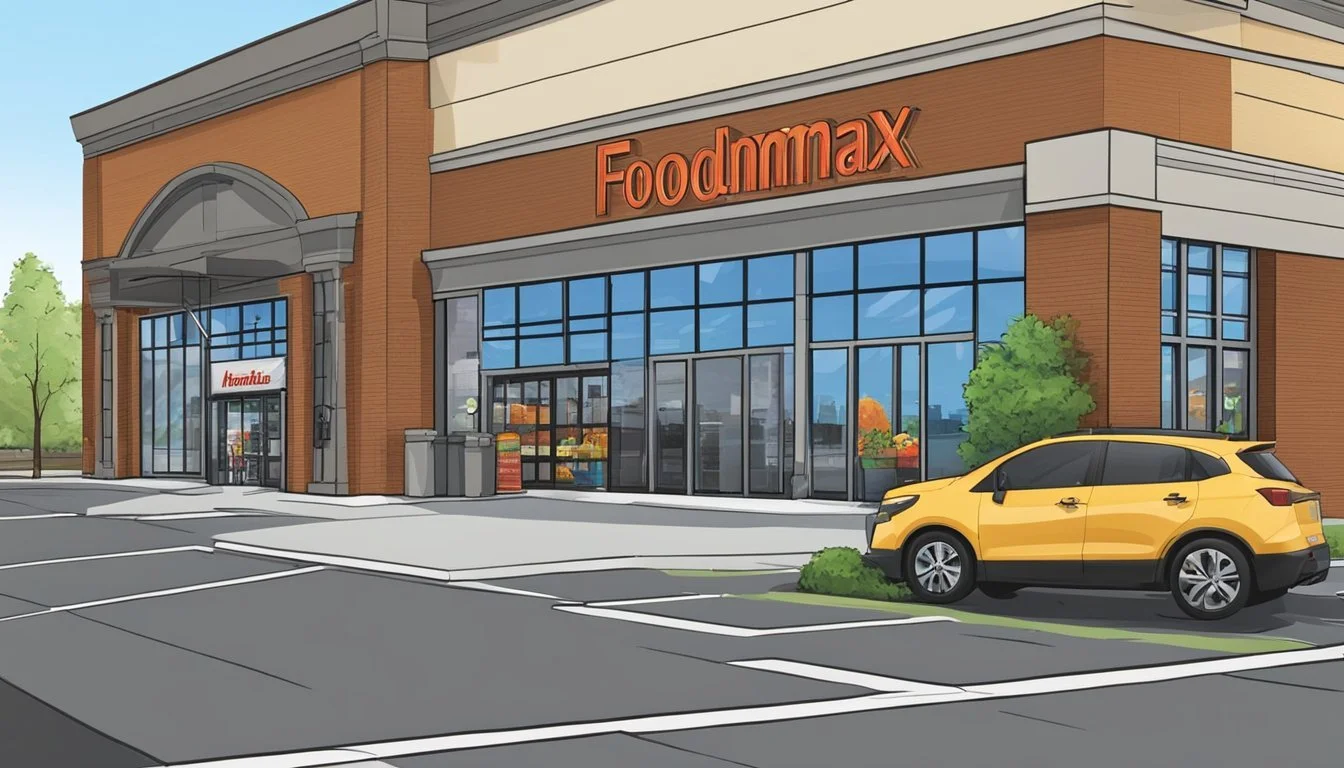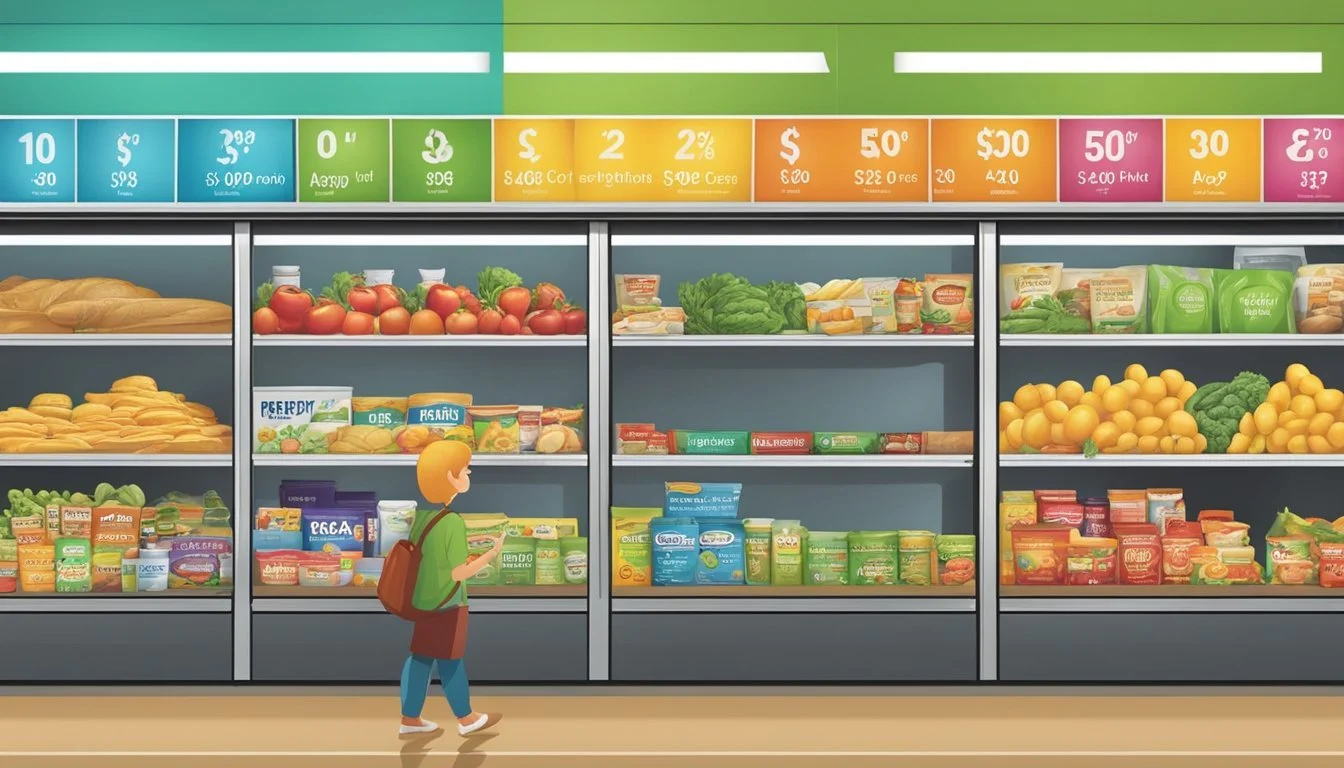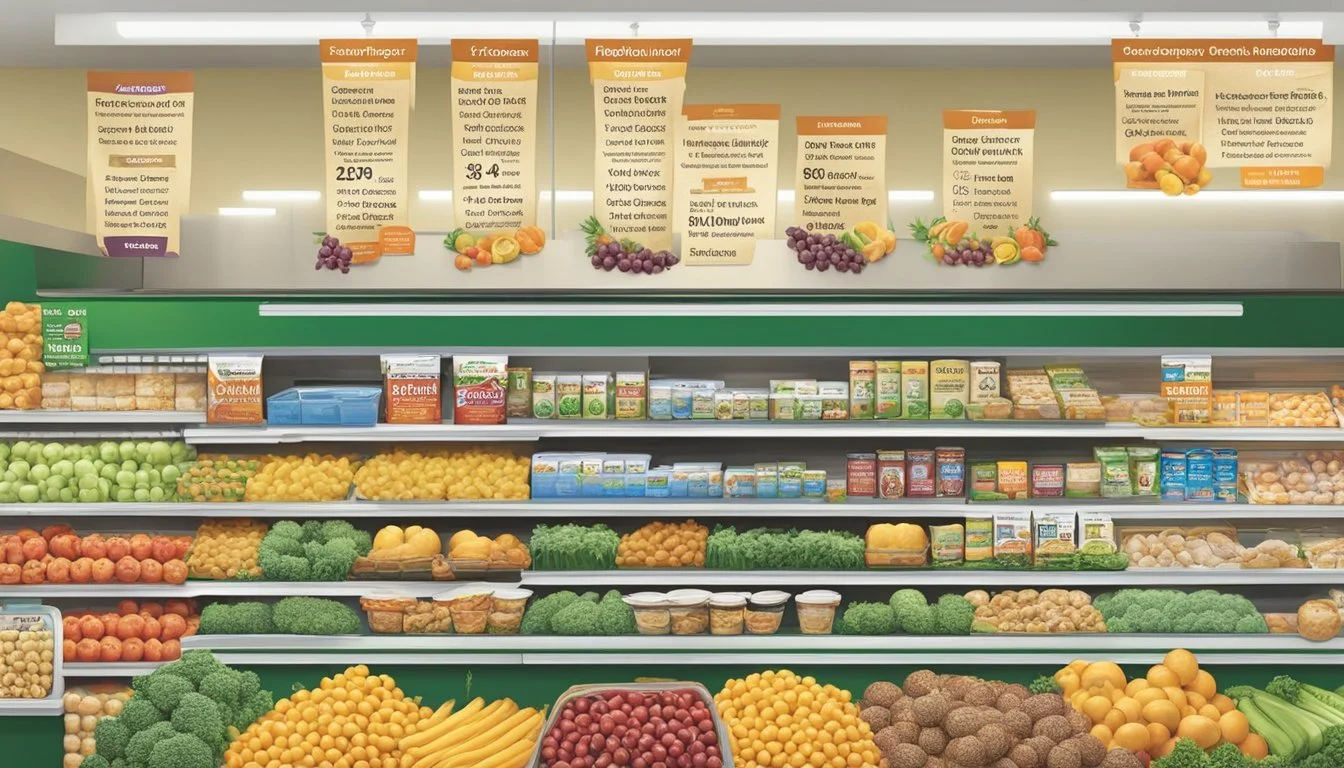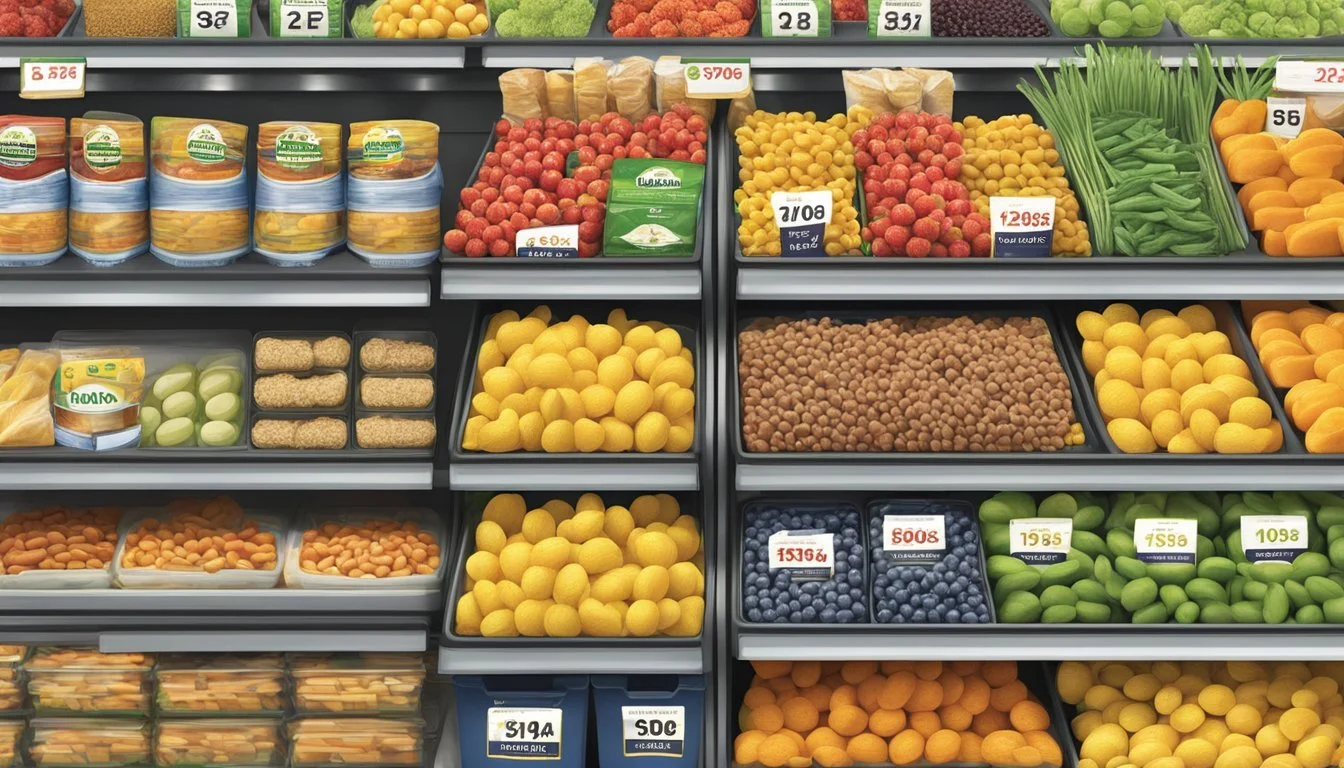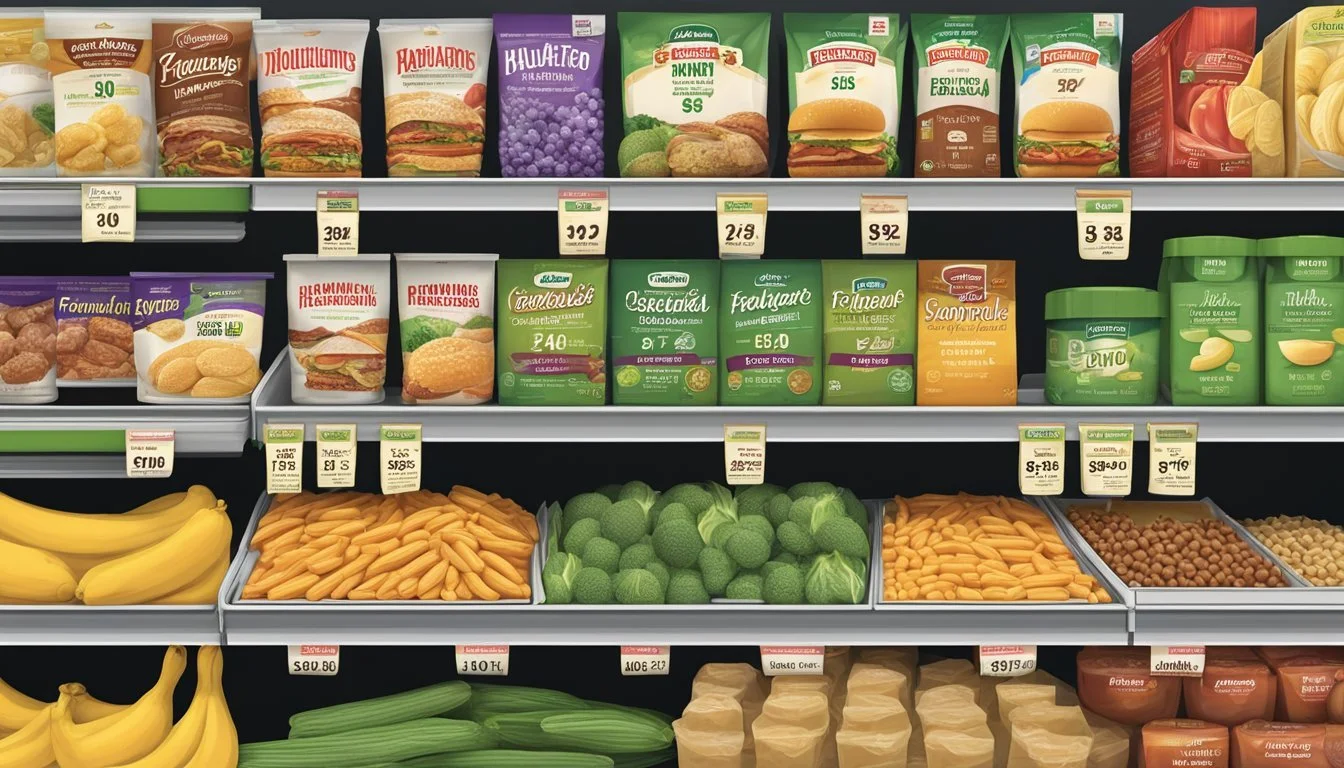Is FoodMaxx Cheaper Than Hannaford?
A Price Comparison Analysis
FoodMaxx and Hannaford are two popular grocery chains that attract budget-conscious shoppers. Many customers wonder which store offers better prices overall. Based on available data, FoodMaxx generally provides lower prices than Hannaford, with some estimates suggesting FoodMaxx prices are up to 21% below average grocery store prices.
Price comparisons between specific stores can vary depending on location and product selection. While FoodMaxx focuses primarily on offering low prices, Hannaford aims to balance affordability with a wider range of products and services. Customers may find different advantages at each chain depending on their shopping preferences and needs.
When comparing grocery stores, it's important to consider factors beyond just price. Product quality, store layout, customer service, and available promotions can all influence the overall shopping experience. Shoppers may want to compare prices on their most frequently purchased items at both FoodMaxx and Hannaford to determine which store offers the best value for their specific needs.
Overview of FoodMaxx and Hannaford
FoodMaxx and Hannaford are two distinct supermarket chains operating in different regions of the United States. Each has its own unique history, store experience, and approach to serving customers.
History of FoodMaxx
FoodMaxx began operations in 1986 as a warehouse-style grocery store. It was founded by Save Mart Supermarkets to offer customers lower prices through a no-frills shopping experience.
The chain rapidly expanded throughout Northern California and Nevada. FoodMaxx stores are known for their cost-cutting measures, such as having customers bag their own groceries and using minimal decor.
By the early 2000s, FoodMaxx had established itself as a popular choice for budget-conscious shoppers. The company continued to grow, focusing on urban areas and communities seeking affordable grocery options.
FoodMaxx Store Experience
FoodMaxx stores are designed with efficiency and cost-saving in mind. The layout is typically open and warehouse-like, with products often displayed in their original shipping boxes.
Customers can expect:
Wide aisles for easy navigation
Bulk purchasing options
A diverse selection of international foods
Self-bagging stations
The stores prioritize low prices over aesthetics, appealing to families looking to stretch their grocery budgets. FoodMaxx also offers a loyalty program, providing additional savings to regular shoppers.
History of Hannaford
Hannaford's roots trace back to 1883 when Arthur Hannaford began selling produce from a cart in Portland, Maine. The business gradually evolved into a small grocery store.
In the early 1900s, Hannaford expanded its operations, opening additional locations throughout New England. The company embraced innovation, being one of the first grocers to use IBM punch card technology for inventory management in the 1930s.
Hannaford continued to grow through acquisitions and new store openings. By the late 20th century, it had established itself as a major supermarket chain in the Northeast.
Hannaford Store Experience
Hannaford stores are known for their clean, well-organized layouts and focus on fresh, high-quality products. The company emphasizes customer service and community involvement.
Key features of Hannaford stores include:
Full-service deli and bakery departments
Extensive produce sections with local offerings
Pharmacies in many locations
Commitment to sustainability and healthy living
Hannaford has implemented various programs to enhance the shopping experience, such as Hannaford To Go, which allows customers to order groceries online for pickup or delivery. The chain also maintains strict quality standards for its products, particularly in its fresh departments.
Price Comparison Strategy
Comparing prices between FoodMaxx and Hannaford requires understanding their distinct pricing approaches and market positioning. Examining their strategies alongside other retailers provides valuable context for budget-conscious shoppers.
FoodMaxx Pricing Policies
FoodMaxx employs an everyday low price model. This discount grocery chain focuses on offering consistently low prices across their product range. They achieve this through streamlined operations and a no-frills shopping experience.
FoodMaxx often features bulk buying options, allowing customers to save more on larger quantities. The store also runs periodic sales and promotions, but these are not their primary pricing strategy.
Their pricing typically falls 20-21% below average market prices, making them a competitive option for budget shoppers. FoodMaxx's approach aims to attract price-sensitive consumers looking for significant savings on their grocery bills.
Hannaford Pricing Policies
Hannaford adopts a balanced pricing strategy. They aim to offer competitive prices while maintaining a focus on quality and customer service. Hannaford's prices are generally lower than traditional supermarkets but may not match extreme discounters.
The chain frequently uses promotional pricing and weekly specials to attract customers. Hannaford's loyalty program provides additional savings opportunities through personalized deals and points accumulation.
Hannaford's prices typically fall around 11% below the average market price. This positioning allows them to appeal to both budget-conscious shoppers and those seeking a more traditional grocery experience with moderate savings.
Price Comparison Across Other Retailers
When comparing FoodMaxx and Hannaford to other retailers, a clear pricing hierarchy emerges. Discount chains like Walmart and Grocery Outlet often offer the lowest prices, with savings of 12-30% below average.
Target falls in the middle range, with prices about 8% lower than average. Traditional supermarkets generally have higher prices but may offer better selection or service.
For a family spending $250 weekly on groceries, choosing a store with 10-30% lower prices could result in significant annual savings. However, factors like product quality, store location, and shopping experience also play crucial roles in determining overall value for consumers.
Assessing the Cost of Groceries
Comparing grocery prices between FoodMaxx and Hannaford reveals significant differences in cost for various items. The price disparities become apparent when examining popular products, bulk purchases, and store brand offerings.
Popular Grocery Items Comparison
FoodMaxx typically offers lower prices on common grocery items compared to Hannaford. A basket of everyday products like milk, bread, eggs, and produce often costs less at FoodMaxx. For example, a gallon of milk might be priced $0.50 to $1.00 lower at FoodMaxx.
Meat prices also tend to be more competitive at FoodMaxx. Ground beef, chicken breasts, and pork chops frequently sell for $0.50 to $1.00 less per pound.
Pantry staples such as rice, pasta, and canned goods generally have a 10-20% price advantage at FoodMaxx over Hannaford.
Bulk Purchase Savings
FoodMaxx excels in offering bulk purchase options at discounted rates. Large packages of paper products, cleaning supplies, and non-perishable foods are often priced significantly lower than their counterparts at Hannaford.
A 25-pound bag of rice at FoodMaxx might cost 15-20% less than the same quantity at Hannaford. Similarly, bulk packs of toilet paper or paper towels can be 10-15% cheaper.
These savings can add up quickly for families or individuals who have storage space and prefer to buy in larger quantities.
Private Label versus National Brands
Both FoodMaxx and Hannaford offer private label products, but FoodMaxx's store brands are typically priced lower. These generic alternatives to national brands can provide substantial savings.
FoodMaxx's store brand cereals, for instance, often cost 20-30% less than comparable products at Hannaford. Canned vegetables, pasta sauces, and frozen foods under FoodMaxx's private label also tend to be 15-25% cheaper.
National brands are usually priced similarly at both stores, but FoodMaxx occasionally offers deeper discounts on these items during sales events.
Quality and Selection of Products
FoodMaxx and Hannaford offer distinct product ranges and quality levels. Their selections in produce, meats, dairy, and bakery items vary significantly, catering to different customer preferences and budgets.
Fresh Produce Evaluation
FoodMaxx provides a wide variety of fruits and vegetables at competitive prices. Their produce section often features both conventional and organic options. Quality can be inconsistent, with some items showing signs of overripeness or bruising.
Hannaford, in contrast, emphasizes freshness and local sourcing. Their produce department typically offers a curated selection of high-quality fruits and vegetables. Seasonal items are prominently displayed, and the store frequently partners with regional farms.
Both chains implement regular quality checks, but Hannaford's produce generally maintains a higher standard of freshness and appearance.
Meat and Deli Quality
FoodMaxx's meat department focuses on value, offering a range of budget-friendly options. Pre-packaged meats are common, with a limited selection of fresh-cut items. The deli section is basic, featuring standard cold cuts and cheeses.
Hannaford excels in this area, providing a diverse array of high-quality meats. Their butcher counter offers custom cuts and specialty items. The deli department boasts a wider selection of gourmet cheeses and prepared foods.
Hannaford's commitment to quality is evident in their meat traceability programs and partnerships with local suppliers.
Dairy and Bakery Offerings
FoodMaxx stocks a variety of dairy products, including milk, eggs, and cheese. Their selection tends to favor mainstream brands at lower price points. The bakery section often features pre-packaged items and a small assortment of fresh-baked goods.
Hannaford's dairy department stands out with a broader range of options, including organic and specialty products. Their cheese selection is particularly noteworthy, offering artisanal and imported varieties.
In the bakery, Hannaford provides a mix of fresh-baked items and artisan breads. Many stores have in-house bakeries producing daily specials and custom cakes.
Store Locations and Accessibility
FoodMaxx and Hannaford operate in different regions of the United States, impacting their accessibility for customers. Their store locations and market presence play a crucial role in determining which chain might be more convenient or cost-effective for shoppers.
Geographic Presence
FoodMaxx primarily serves customers in California, with a strong market presence in the state's central and northern regions. The chain focuses on urban and suburban areas, offering budget-friendly grocery options to local communities.
Hannaford, on the other hand, has a significant footprint in the Northeast. The company operates stores in Maine, New Hampshire, Vermont, Massachusetts, and New York. Hannaford's presence is particularly strong in smaller towns and rural areas, providing essential grocery services to these communities.
Accessibility and Convenience
FoodMaxx stores are typically located in easily accessible areas within California, often in shopping centers or standalone buildings with ample parking. The chain's focus on urban and suburban locations makes it convenient for many California residents to shop at their stores.
Hannaford's accessibility varies depending on the region. In major cities like Boston, Hannaford stores may be less common compared to other chains. However, in smaller towns and rural areas across the Northeast, Hannaford often serves as a primary grocery option for residents. The company has invested in making its stores accessible to customers with disabilities and offers online shopping with pickup and delivery services in many locations.
Customer Experience and Services
FoodMaxx and Hannaford offer distinct shopping experiences with varied service levels. Both aim to provide efficient checkout processes and additional conveniences to enhance customer satisfaction.
Checking Out Efficiency
FoodMaxx focuses on a no-frills approach to keep costs down. This often means fewer cashiers and longer lines during peak hours. Self-checkout options are available at many locations to help speed up the process.
Hannaford typically staffs more cashiers and provides a more personalized checkout experience. They often have dedicated express lanes for customers with fewer items. Both chains use modern point-of-sale systems to ensure accurate pricing and quick transactions.
Additional Services
FoodMaxx offers basic grocery shopping amenities. Their stores usually have coin-operated shopping carts and limited in-store services. Some locations provide check cashing and money order services.
Hannaford extends a broader range of services. Many stores feature pharmacies, floral departments, and deli counters with prepared foods. They also offer online ordering with curbside pickup at select locations. Hannaford's customer service desks typically handle returns, exchanges, and provide general assistance more readily than FoodMaxx.
Loyalty and Marketing Initiatives
Grocery chains employ various strategies to attract and retain customers. These initiatives often focus on rewarding loyal shoppers and offering enticing deals to drive sales.
Loyalty Programs
Hannaford Supermarkets recently launched its first-ever loyalty program, My Hannaford Rewards. This program offers a 2% reward on 5,200 store-brand products, including fresh and center-store items. Customers can earn rewards without subscribing to a premium tier, setting it apart from many two-tiered loyalty schemes.
The My Hannaford Rewards program also provides digital coupons tailored to individual shopping preferences. This personalized approach aims to enhance customer engagement and encourage repeat visits.
FoodMaxx's loyalty program details are not readily available in the provided information.
Sales and Promotions
Both FoodMaxx and Hannaford utilize sales and promotions to attract price-conscious shoppers. Hannaford focuses on maintaining everyday low prices across its product range. This strategy aims to build trust with customers by offering consistent value.
FoodMaxx likely employs similar tactics, though specific details are not provided in the search results. Common promotional strategies in the grocery industry include:
Weekly specials
Buy one, get one free offers
Seasonal discounts
Bulk purchase savings
These promotions help create a competitive pricing environment and give customers additional incentives to choose one store over another.
Comparisons with Online and Large Retailers
Online retailers and major chains have significantly impacted grocery pricing and shopping habits. Their influence extends beyond physical stores to digital platforms, creating new competitive dynamics in the industry.
Amazon Prime and Online Shopping
Amazon Prime offers grocery delivery services with competitive prices on many items. Prime members can access exclusive deals and free delivery on eligible orders. This convenience factor has attracted many shoppers, especially in urban areas.
Amazon's acquisition of Whole Foods has further expanded its grocery offerings. The company now provides a mix of premium and everyday products at various price points.
Online grocery shopping has grown rapidly, with many consumers valuing the time-saving aspect. However, prices can vary widely between online and in-store options.
Walmart and Target's Market Influence
Walmart remains a major force in grocery retail, known for its low prices on many items. The company's size allows it to negotiate better deals with suppliers, often undercutting smaller chains like FoodMaxx.
Walmart's grocery pickup and delivery services have gained popularity, competing directly with online retailers. Their prices are frequently lower than Amazon's for many grocery staples.
Target has also expanded its grocery offerings, focusing on a mix of value and premium products. While not always the cheapest option, Target's pricing strategy aims to attract shoppers with a balance of quality and affordability.
Both Walmart and Target leverage their extensive physical store networks to offer same-day pickup options, challenging pure online retailers in terms of convenience and speed.
Final Assessment: Is FoodMaxx Cheaper than Hannaford?
FoodMaxx generally offers lower prices than Hannaford. As a regional discount chain, FoodMaxx focuses on providing budget-friendly options for shoppers.
Pricing data shows FoodMaxx's prices are approximately 21% below the average across surveyed stores. This significant discount can lead to substantial savings for customers.
Hannaford, while competitive, does not typically match FoodMaxx's low pricing strategy. Budget-conscious shoppers may find FoodMaxx more appealing for everyday grocery needs.
It's important to note that price isn't the only factor. Hannaford may offer a wider selection or different product quality in some categories.
FoodMaxx's cost-saving measures include:
Limited store amenities
Fewer name-brand options
Self-bagging at checkout
These practices help keep prices low, benefiting price-sensitive consumers.
For a family spending $250 weekly on groceries, switching to FoodMaxx could potentially save over $50 per week. This adds up to significant annual savings.
While FoodMaxx is generally cheaper, prices can vary by location and specific items. Shoppers should compare prices on their typical purchases to determine the best value for their needs.




